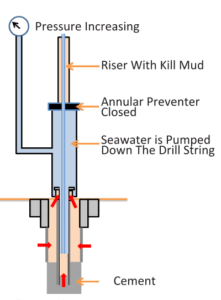What is an Inflow Test?

An Inflow Test is a pressure test designed to assess the integrity of the wellhead assembly and the mechanical and cement seals in the well, including the casing and liner overlap. This test is used when positive pressure cannot be applied upstream of the barrier being tested. The primary principle of this test is to evaluate the pressure in the direction of flow from the formation into the wellbore.
Other Names for Inflow Tests:
- Negative Pressure Test
- Negative Differential Test
API Definition: An inflow test, also known as a negative test or negative differential test, involves reducing the hydrostatic pressure in the well to create a net differential pressure from the formation into the wellbore. (Source: API RP 96, Deep Water Well Design and Construction, First Edition, March 2013).
Traditional Method of Interpretation
Inflow tests are commonly used to check the mechanical integrity of casing shoes and liner laps by creating an underbalance above the zone of interest. To conduct the test, the well is typically displaced with water or diesel. After displacement, fluid returns are monitored for at least four hours to check for any signs of backflow. The cause of any backflow, including thermal expansion, must be identified before it can be confirmed as an inflow from the formation.
Backflow rates should be plotted against time, and it may take several hours to determine whether the observed pressure changes are due to thermal expansion or an actual formation inflow.
Norsok Guidelines
According to Norsok, well programs must include a detailed procedure and acceptance criteria for all inflow tests. These tests should be conducted in a controlled manner with approved procedures and risk analysis. Well programs should also include descriptions of full, partial, and seepage losses, as well as static and dynamic fluid losses, to provide a common frame of reference when deviations in return flow are observed.
Additionally, creating a baseline for normal downhole loss rates specific to a field is essential for accurate monitoring.
When displacing a fluid barrier, if the remaining barriers are untested cement or mechanical plugs, all displacements to lighter fluid should be conducted through the choke and kill lines, and the riser must be isolated with a closed blowout preventer (BOP).
This method ensures a thorough evaluation of the well’s integrity and mitigates the risk of any undetected issues that could affect wellbore safety.
